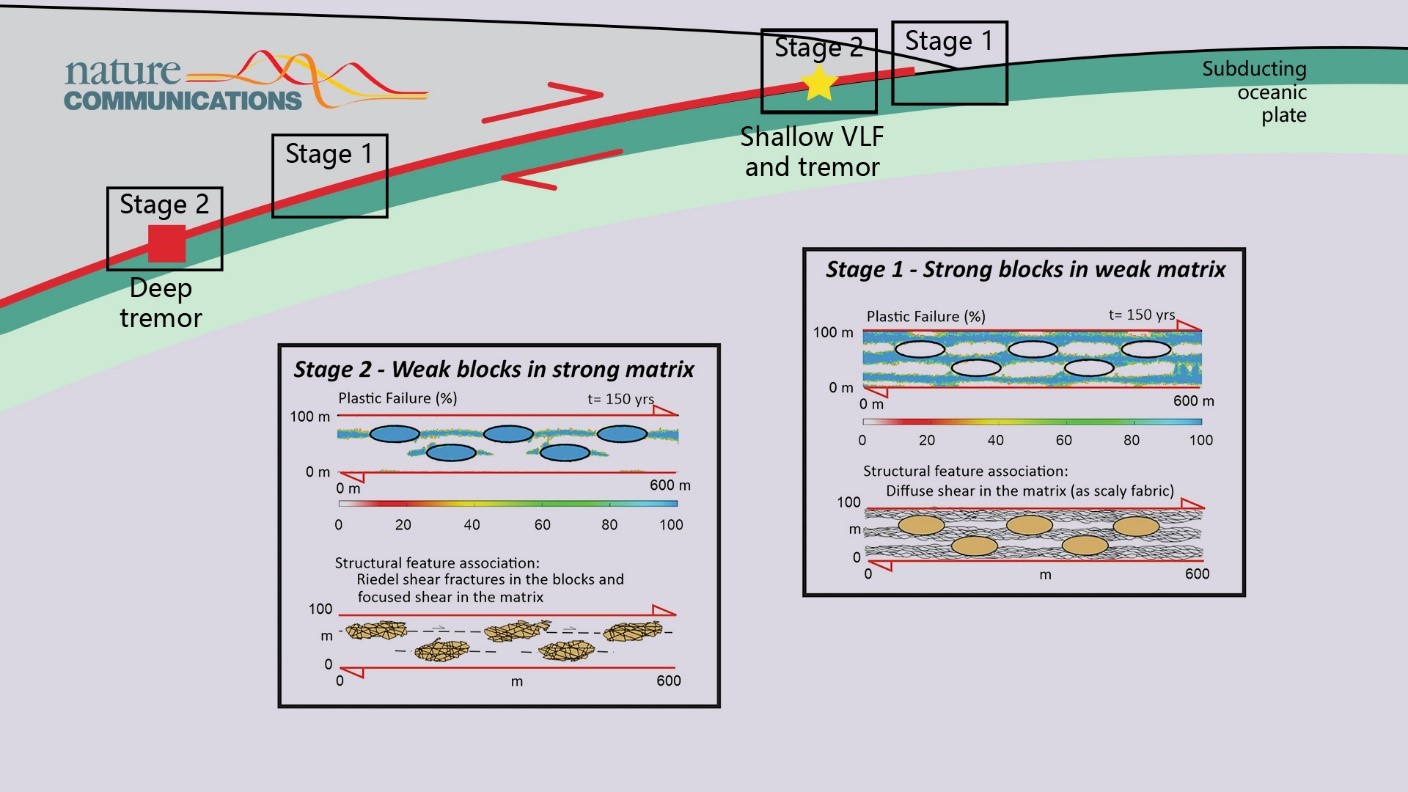China is an area known to be earthquake-prone. Seismic source physical processes such as earthquake incubation environment, nucleation process, and rupture propagation need to be deeply understood in earthquake prevention and disaster reduction.
In recent years, seismic source physics in observation, experiment, theory, and numerical simulation research has always been a hotly discussed topic. Non-volcanic tremor (NVT) is a special type of seismic activity, which is usually recorded far away from volcanic areas. It usually occurs at or near the shallow and deep edges of seismic sources located within plate boundaries and at plate interfaces of transformation faults. It is accompanied by extremely low-frequency earthquakes, which last for a long period of time, and also involves shear fractures and sliding. Tremors generally occur in areas where the present block is weak and the surrounding matrix has not yet reached the normal seismic rupture state.

Prof. Jason P. Morgan’s team from the Department of Ocean Science and Engineering at the Southern University of Science and Technology (SUSTech) recently collaborated with scholars from the University of Florence, Italy, and other institutions to make new progress in the origin of non-volcanic tremor. It reveals that a tectonic tremor is due to frequent small failure events that occur in relatively weak blocks.
Their research, entitled “A strength inversion origin for non-volcanic tremor,” was published in the high-impact journal Nature Communication. It highlights that the resulting stress build-up between two failing weaker blocks could trigger a local rupture of the matrix associated with the higher yield stresses and stress drops typically associated with micro-earthquakes and earthquakes. These higher stresses would also tend to reduce the viscosity of the matrix if it follows a power-law creep rheology, which could lead to higher matrix creep-rates/SSEs.
Based on the special rheological relationship between the rock components of the strong matrix and the weak block in the fault zone, Prof. Morgan’s group and his collaborators studied the heterogeneous rock samples in the shallow seismic zone near the central Trench of the United States. They adopted field geological observation and geomechanical experiment measurements in the laboratory. They combined them with the simulation method based on Stokes viscoelastic-plastic equation to study the origin of strength inversion of non-volcanic tremors (Figure 1).

Figure 1. Numerical experiments on matrix and block deformation
In the laboratory experiment, they carried out microstructure observations and triaxial strength experiments (Figure 2). Meanwhile, the indoor triaxial strength experiment results were used to constrain the numerical model to reproduce the non-uniform deformation of rock.

Figure 2. Triaxial strength experiments
The results from the researchers show that the subduction zone rock under the hydrothermal process leads to the strong rock and weak matrix change into a strong matrix wrapped in weak rock. At first, the strength of the rock affected by the earthquake bursts, and gradually the strong matrix, due to the earthquake rupture, also separates. The high stress also decreases the matrix viscosity and lead creep, and the tremor occurs.
The mechanism can be extended to larger thrust environments in deeper regions where fluid-acting basalt-eclogite phase transition occurs. In addition, they found that the stress drop of tremor in the subduction system is lower than a microearthquake, which can be used for reference to distinguish a tremor from a micro-earthquake. The fluid pressure also plays an important role in the generation of tremors.
This study reveals the triggering of non-volcanic tremors from the microscopic view of geological rocks, which provides a new inspiration to understand non-volcanic tremors. It also provides an important scientific understanding of natural and induced seismic activity analysis, modeling, and seismic risk analysis.
Prof. Paola Vannucchi from the University of Florence, Italy, is the first author of this paper. Prof. Jason P. Morgan from the Department of Ocean Science and Engineering at SUSTech is the corresponding author.
Prof. Alexander Clarke from University College London (UCL), Prof. Albert de Montserrat from the University of Padova, Italy, Prof. Audrey Ougier-Simonin from the British Geological Survey (BGS), and Prof. Luca Aldega from the Sapienza University of Rome, Italy, also cooperated in this study.
This work was supported by the National Natural Science Foundation of China (NSFC).
Paper link: https://www.nature.com/articles/s41467-022-29944-8
To read all stories about SUSTech science, subscribe to the monthly SUSTech Newsletter.
Proofread ByAdrian Cremin, Yingying XIA
Photo By